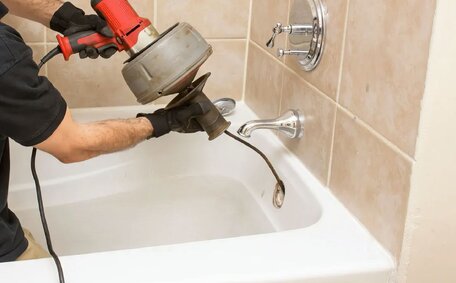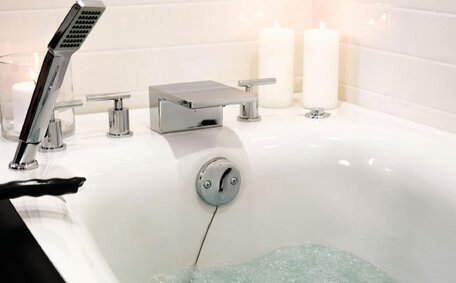Introduction to Pipe Relining
Pipe relining is a trenchless method of repairing damaged pipes without having to dig them up. It involves inserting a resin-impregnated liner into the existing cracked or worn pipe and inflating it to form a new pipe within the old one. This is also known as Cured In Place Pipe (CIPP) rehabilitation.
Pipe relining offers several benefits compared to traditional pipe replacement. It is less invasive since no digging is required. It is less invasive since no digging is required.
The resin liner bonds to the old pipe creating a pipe that is as strong as or stronger than brand new pipes. Overall, pipe relining provides a fast and effective way to restore your pipes while minimising disruption to your home or business.
What Causes Pipes to Leak?
There are several common causes of leaks in pipes:
- Corrosion - Over time, metal pipes can corrode and develop pinhole leaks or cracks that lead to dripping or spraying water.
- Physical damage - If pipes get hit by objects or shift due to soil movement, cracks and fractures can form leading to leaks.
- Faulty joints - Seal failures at joints between pipe sections or connections to fixtures can cause water to escape.
- Freezing temperatures - Water expanding as it freezes can rupture pipes, especially if water is left sitting in pipes overnight.
- Tree roots - Roots from shrubs and trees that grow toward water sources can penetrate and damage underground pipes.
- Chemical corrosion - Harsh drain cleaners and acidic substances flowing through pipes can eat away materials over time.
In most cases, once a leak starts it tends to get worse over time. Even small drips can eventually lead to big leaks. Catching and repairing minor pipe leaks early is key to prevent water damage and more costly repairs down the road.
How Does Pipe Relining Work?
Pipe relining involves a multi-step process:
- First, a drain camera inspection is done to examine the interior condition of the pipes, locate any problem areas, and measure the length and diameter of the pipes.
- Next, the pipes are thoroughly cleaned to remove any built-up deposits or debris that could interfere with the relining process.
- Once cleaned, a flexible epoxy resin tube (known as the CIPP liner) is saturated with a two-part resin and then fed through an access point into the damaged pipe.
- Using water or air pressure, the liner is inflated so it presses tightly against the old pipe walls, forcing the resin into any cracks and gaps.
- The resin is then cured, usually by circulating hot water or steam through the pipe to activate the hardening chemicals. Curing times range from 1-4 hours.
- Finally, once hardened, the new pipe-within-a-pipe is cooled and any access points are sealed off. The result is a restored pipe that is structurally sound.
Throughout the process, care is taken to minimise disruption to usage of plumbing and sewer lines. By foregoing traditional dig and replace methods, pipe relining allows for repairs with much less demolition or yard excavation.
Materials Used in Pipe Relining
The key material used in pipe relining is epoxy resin. This thermoset plastic is made from materials like bisphenol A and epichlorohydrin. When combined, these form a thick, gluey liquid resin.
The resin is then hardened or "cured" using heat, creating a tough, rigid plastic material.
Epoxy resin is ideal for CIPP pipe liners because it bonds very well to the old pipe walls, can mould to any shape, and resists corrosion and chemicals. Once fully cured, the epoxy liner is extremely durable with a lifespan of 20-50 years. This is just as long, if not longer, than traditional piping materials.
The epoxy resins used must be properly formulated to suit the type of pipeline being repaired. The curing agents and processes will also vary based on the application.
For example, a basic vinyl ester resin can be used for non-potable water lines, while a specialised amine-cured epoxy resin is needed for potable water lines to prevent leaching of chemicals into the water.
Overall, epoxy resin liners provide the strength, longevity, and safety needed to effectively re-line ageing pipes as a trenchless repair solution.
Process of Installing a Pipe Liner
Installing a pipe liner follows these key steps:
- The liner materials are prepared offsite. This includes saturating the felt tube liner with liquid epoxy resin and allowing time for it to thoroughly soak in.
- Access points are created at the pipe endpoints. This may involve removing a cleanout or cutting into the pipe via small excavations.
- The liner is attached to a winch and fed through the pipe from one access point. A rope is attached at the opposite end to help pull it through.
- Once in place, the liner is inflated using water or air pressure to fit tightly to the old pipe walls.
- Hot water is circulated to heat the pipe liner to cure temperatures (140-180°F). This takes 1-4 hours depending on pipe length.
- Closed-circuit video inspection checks for leaks, smooth connections and confirms proper curing.
- Excess liner material is trimmed off and access points are sealed off.
- Lateral connection points are reopened using a robotic cutter to restore branching pipelines.
- Finally, the pipe is flushed and put back into service once fully cured and cooled.
Proper installation is critical to ensure strength, water-tightness, and longevity of the epoxy pipe liner. When done correctly, it restores pipes for decades of renewed service life.
Advantages of Pipe Relining
Pipe relining offers several key advantages compared to traditional pipe replacement:
- Less invasive - Since relining is a trenchless method, it requires minimal excavation and disturbance to properties. This helps preserve landscaping, concrete, and structures.
- Faster repairs - Pipe relining can be completed in a day while replacement takes several days to weeks.
- Improved strength and durability - The epoxy liner lasts 50+ years which is longer than the lifespan of old piping.
- Compatible with most materials - Relining works for cast iron, PVC, concrete, clay, and galvanised steel pipes.
- Larger pipe capacity - Smoother interior surface improves water flow compared to older corroded pipes.
- Cost savings - Relining on average costs 50% less than full pipe replacement.
For a fast, effective, and minimally disruptive way to restore your pipes and prevent leaks, pipe relining is an excellent solution worth considering.
Potential Limitations of Pipe Relining
While pipe relining offers many benefits, there are some potential limitations to be aware of:
- Access restrictions - Pipe relining relies on being able to insert the liner through access points at either end. Severely damaged pipes or small pipe diameters may restrict liner insertion.
- Compatible materials - While most pipes are compatible, relining may not work well for some pipe types like galvanised steel or asbestos cement pipes.
- Root intrusion - Large root masses growing into pipes can be difficult to address with relining alone.
- Curing time - The 1-4 hour curing process requires temporarily stopping use of the plumbing lines being repaired.
- Partial repairs - Relining only patches isolated sections of pipe, so leaks may reoccur in other areas.
- Cost - Long pipe runs or large diameters may make replacement more economical than relining.
A qualified plumbing professional can assess your unique situation and pipes to determine if relining is the right repair method to stop leaks and restore your plumbing. They can advise you on any limitations that could impact the results or costs.
Types of Pipes Suitable for Relining
Pipe relining can be effectively used on many different pipe materials including:
- PVC (polyvinyl chloride)
- Cast iron
- Galvanised steel
- Copper
- Concrete
- Clay
- Asbestos cement
PVC, cast iron, concrete and clay pipes make up a significant portion of residential drain, waste and vent plumbing. Galvanised steel and copper pipes are also commonly found in water supply lines. Provided the pipes are still structurally sound, pipe relining can restore most of these pipe types for continued service.
The epoxy resin liners bond well to the smooth surfaces of plastic and metal pipes. Concrete and clay pipes provide a rougher surface for the liner to grip, though cracks and missing chunks can make relining more difficult. Severely corroded metal pipes also decrease the effectiveness of relining.
In some cases, partial replacement may be recommended when sections of pipe are too deteriorated to reline. But in general, pipe relining can be a viable trenchless repair solution for most existing pipe materials. A professional plumbing inspection can determine if your pipes are suitable candidates for relining.
When to Choose Pipe Relining
There are several situations where pipe relining is typically recommended over full replacement:
- Minimal excavation - When minimal disturbance to landscaping or structures is desired, relining prevents major digging.
- Faster solution - Quick 1-2 day repairs are possible rather than weeks of replacement work.
- Buried pipes - Relining avoids the need to dig up and replace underground pipes.
- Busy properties - The operation can be done with minimal interruption to occupied businesses.
- Restricted access areas - Tight spaces make relining an attractive option.
- As preventative maintenance - Relining can extend the life of pipes that are ageing but not yet leaking.
However, there are also cases where full-scale replacement may be better:
- Severely deteriorated pipes - Where large sections are corroded, collapsed or blocked.
- Drastic change in pipe size needed - When capacity needs to be increased.
- Partial system replacement - If other new plumbing work is being carried out.
- Major realignment needed - For rerouting pipes.
- Asbestos present - Asbestos pipe removal requires replacement.
Consulting with a professional plumber is recommended to evaluate your specific situation, assess the current pipes, and determine if relining or replacement is the right solution.
Conclusion
In summary, pipe relining is an effective trenchless method for repairing leaking pipes and restoring structural integrity.
When compared to full pipe replacement, key benefits of relining include being less invasive, faster to complete, and more durable. Relining is compatible with most common pipe materials and can be a great solution when excavation and demolition need to be minimised.
However, pipe relining is not necessarily the right choice in every situation. Factors like pipe condition, access constraints, and project scope play a role in determining if relining is the best repair approach. Consulting with a professional plumber is advised to evaluate your specific circumstances.
If you are dealing with leaky or deteriorated pipes, contact Marrickville Plumbing today to discuss pipe relining. Reach out to us by phone on XXX-XXX-XXXX or email [email protected] to schedule your initial inspection.
Our team of experts can assess your pipes, advise if relining is suitable, and handle the entire project so you can stop worrying about leaks.






